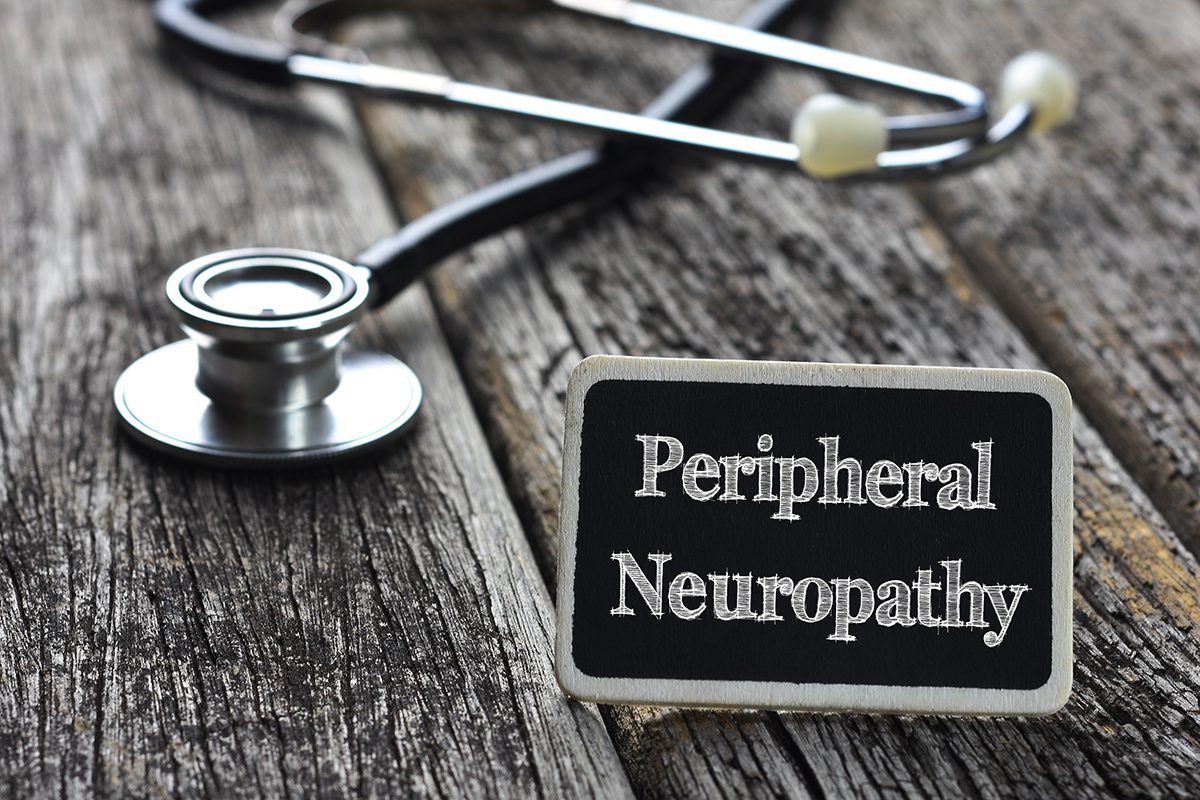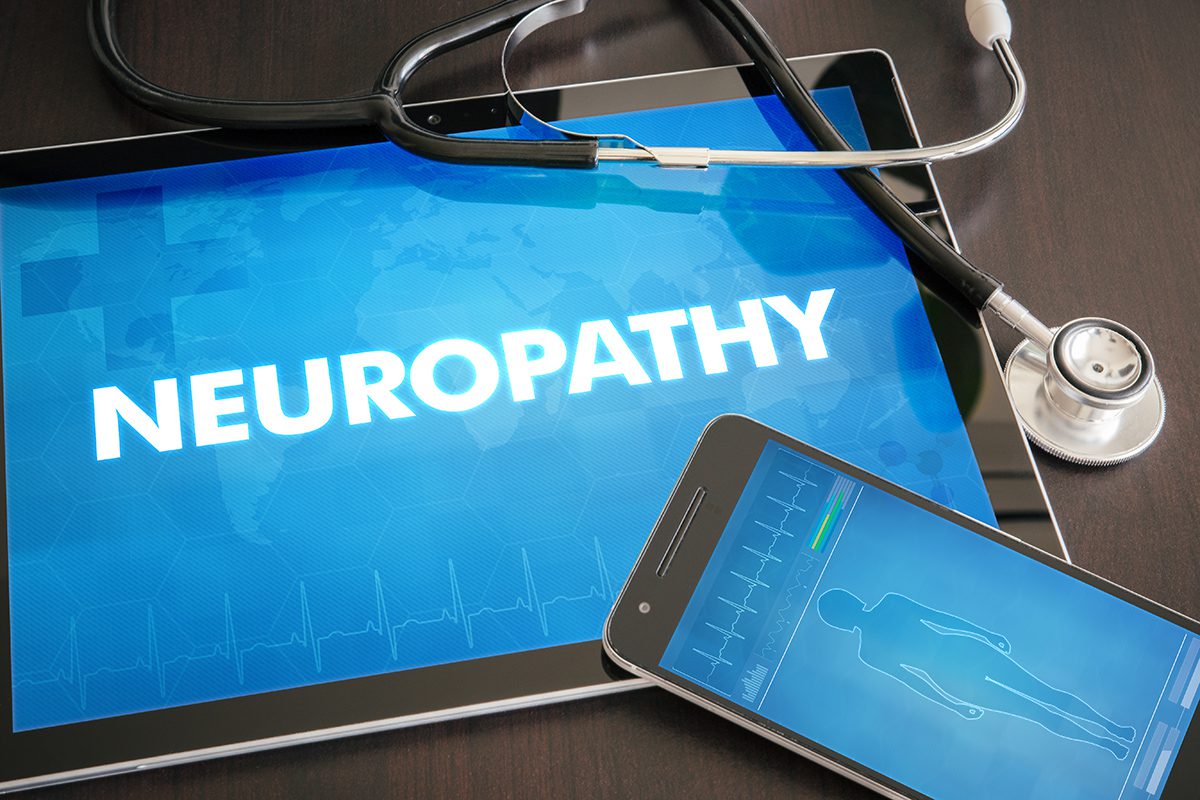In-depth research by the Brain Foundation reveals that up to 50% of diabetic patients suffer from diabetic neuropathy. To treat neuropathic issues effectively, doctors need to identify the patient’s underlying conditions first.
The causes behind cranial neuropathy include diabetes, blood pressure, autoimmune issues, and various other issues. Here, we discuss its causes, symptoms and signs, and treatments in detail:
Critical Facts about Cranial Neuropathy
These include:
- Cranial neuropathy is the result of damage to the cranial nerves connected to your brain. It can affect movement, as well as sensation in your eyes, face, and ears
- Common indicators of cranial neuropathy include weakness, changes in vision, and loss of sensation in certain parts of your face
- Some cases of cranial neuropathy improve on their own, but others may persist. It can be helpful to control high blood pressure and diabetes, but if your symptoms don’t improve, you may seek treatments and surgery
What are the Different Types of Neuropathies?

Here we discuss the different types of neuropathies:
Autonomic Neuropathy
Autonomic neuropathy affects your involuntary nervous system, including the nerve-related to bowels/bladder, digestion, circulation, heart, sweat glands, and sexual organs.
This type of neuropathy is often caused by various health conditions like diabetes rather than nerve damage. Autonomic neuropathy may also be a medication-induced side effect.
Cranial Neuropathy
Cranial neuropathy refers to a condition that affects one or more of your nerves connected to the brainstem.
It can lead to various conditions, including microvascular cranial nerve palsy, Bell’s palsy, third, fourth, and sixth nerve palsy, and cranial neuropathies. It may even affect your face, eyes, and hearing.
In addition, some conditions due to cranial neuropathies are related to vascular health conditions like diabetes.
Peripheral Neuropathy
It is a prevalent condition that harms the nerves located in the extremities of your legs, feet, toes, hands, arms, and joints.

It may be the result of various injuries and conditions, including diabetes, high blood sugar, etc. Controlling these conditions is a great way to alleviate symptoms, as well as eliminate peripheral symptoms.
If you suffer from nerve damage due to other causes, complementary therapies are fantastic to treat them.
Proximal Neuropathy
Proximal neuropathy is also one of the most common types of neuropathy. The patient suffers from nerve damage on their thighs, hips, and gluteal areas in this condition.
Typically, proximal neuropathy affects one side of your body; however, it can spread to both sides if you fail to treat it.
What are the Causes of Cranial Neuropathy?
Cranial neuropathy can develop due to a variety of reasons, including:
Aneurysm
Aneurysms can put pressure on nearby nerves. These typically affect the third, fourth, and sixth cranial nerves.
Autoimmune Abnormalities
Autoimmune abnormalities may cause cranial neuropathy when your immune system ends up attacking them.
It is often the cause of nerve disorders like Guillian Barre syndrome or Lupus.
Cancer
Sometimes, cancer cells spread from your body to the spinal fluid. It can damage one or multiple cranial nerves.
In some cases, cancer can put pressure on the cranial nerves running through your skull.
Congenital Cranial Neuropathies
It refers to cranial nerve injuries due to trauma occurring during birth. They may also be the result of developmental problems or infections that occur before birth.
Increased Intracranial pressure from a Tumor, Brain Swelling, or Head Trauma
Enhanced intracranial pressure that results from brain swelling or head injuries can harm your cranial nerves.
Inevitable headaches also raise pressure. Typically, the third, fourth, and sixth cranial nerves are the most affected.
Infections
Infections in your spinal fluid may irritate nerves. For instance, Lyme disease damages your seventh nerve but also affects your cranial nerve.
Inflammatory Diseases
Various inflammatory diseases, such as multiple sclerosis and sarcoidosis, can affect your cranial nerves.
Microvascular Cranial Nerve Palsy
Microvascular cranial nerve palsy typically affects people suffering from vascular risks like high blood pressure, diabetes, or smoking.
Poor circulation can end up damaging your cranial nerves. This condition usually affects the third, fourth, and sixth cranial nerve.
What are the Signs and Symptoms of Cranial Neuropathy?

The signs and symptoms of cranial neuropathy vary depending on the specific type you suffer from. In addition, the location and type of nerves damaged can also cause different symptoms.
Typically, cranial neuropathy causes the following signs and symptoms:
- A tingling sensation
- Numbness
- Pain
- Skin that feels extra sensitive to touches
- Vision changes
- Weak and/or paralyzed muscles which may lead to slurred speech and drooling
Here we’ve also listed the symptoms of various types of cranial neuropathies:
- Bell Palsy- This can cause drooping of a particular side of your face. Usually, it affects only one part of your face
- Microvascular Cranial Nerve Palsy- It can lead to droopy eyelids, double vision, and several other eyesight issues
- Third Nerve Palsy- It may lead to double vision, difficulty in moving your eye, sagging and drooping in your eyelids, and cause your pupil to appear bigger than normal
- Fourth Nerve Palsy- This condition may cause you to see double and turn your eye(s) abnormally. You may even tilt your head in a particular direction to see clearly.
- Sixth Nerve Palsy- It can lead to double vision, as well as abnormal movements of your eye
What is the Prognosis for Neuropathy?
It includes:
- Nerves affected by cranial neuropathy may take longer to recover even if you treat the underlying cause.
- In genetic conditions, there is no effective treatment
- Severe nerve damage, regardless of the underlying causes, is not reversible
- Typically, the outlook for cranial nerve damage depends on the underlying cause. You can reverse the damage if surgery or medicine can treat the underlying causes.
How is Cranial Neuropathy Diagnosed?

Your healthcare professional will conduct several tests to identify neuropathy. In most cases, your healthcare provider will ask you to get the following tests:
Physical Examination
First and foremost, your doctor will visually examine your face to determine whether you have paralysis and its extent.
They may ask you the following questions:
- When did you start noticing the symptoms of paralysis?
- How quickly did it develop?
- Do you have any muscle control in the affected area?
Your doctor may even ask whether you have additional symptoms like tinnitus, i.e., a persistent ringing in your ears or hearing loss. Since the seventh cranial nerve travels next to your eighth cranial nerve through different parts of the skull, these symptoms may occur.
You should consult your doctor if you’ve suffered from recent insect bites like ticks or were diagnosed with a viral infection.
Angiography
Angiography refers to a special x-ray, including a contrast dye. This way, doctors take pictures of your blood vessels and your heart.
Blood Tests
Your doctor will request you take a blood test to determine whether you have an infection or a vascular health condition like high blood pressure or diabetes.
Biopsies
Biopsies of your nerves and skin can help doctors identify how severely your nerves are damaged
Electromyography
EMGs are a great way to measure the electrical activity in your muscles while you’re at rest or working.
Nervous System Test
Your doctor may recommend you to get a nervous system exam to test the following things:
- Your Balance
- Mental Status
- Reflexes
- Test Sensation
MRI Scans
CT and MRI scans use radio waves alongside a magnetic field to create high-quality, 3-dimensional images of your body’s soft tissues. Your doctor will use your MRI scans to study the entire facial nerve. It also allows your healthcare provider to monitor growth or swelling around your cranial nerve.
Probably, your doctor will prescribe an MRI scan that includes a contrasting dye called gadolinium. This way, when the color is injected into your bloodstream, it highlights inflamed areas.
Spinal Tap Tests
Otherwise referred to as lumbar puncture, these tests help pinpoint infections and/or inflammation in your spinal fluid.
Stapedius Reflex Test
Stapedius Reflex test refers to a specialized hearing test where an audiologist assesses potential damage to your seventh cranial nerve.
During your stapedius reflex test, the audiologist uses specific noises to stimulate your stapedius muscle. The nerve responsible for controlling your facial muscles also manages your stapedius muscle.
Depending on whether the muscle responds or not, your doctor will identify the location of the problem. If the stapedius muscle does not respond, it means the area of the facial nerve is damaged.
Nerve Conduction Velocity Tests
Nerve conduction velocity tests allow your doctors to pinpoint which nerve is damaged.
How Do You Treat Cranial Neuropathy Treated?
In some cases, cranial neuropathy can be a sign of a life-threatening emergency. It means you need to contact your healthcare provider right away. Most cranial neuropathies improve with time and require no treatment.
Your doctor may prescribe medication to treat infection, alleviate neuropathic pain, and reduce swelling near a nerve. For severe cases of neuropathy, surgery can be helpful. At other times, nerve damage can’t be fixed or treated.

But you must get diagnosed and treat underlying health conditions that lead to neuropathy. Treating health issues like infections, diabetes, and high blood pressure can assist in treating neuropathy. Here are a couple of ways your doctor may recommend that you manage cranial neuropathy:
Manage Underlying Issues
Controlling the underlying cause of your cranial neuropathy is an excellent way to alleviate symptoms. For instance, if you have diabetes, it may be helpful to manage your blood sugar levels.
If alcohol abuse causes neuropathy, you should limit alcohol intake by going to rehab. Certain medications can also cause neuropathy, so discuss these symptoms with your doctor to switch to another drug.
If an autoimmune disease is causing cranial neuropathy, you’ll have to work with a specialist to manage symptoms.
Medication
The first step to alleviate symptoms of cranial nerve disorder is reliving pain via medication therapy. Typically, doctors recommend over-the-counter pain relief drugs or anticonvulsants.
Anticonvulsants were initially developed to treat epilepsy, but they are also effective for treating nerve pain.
Microvascular Decompression (MVD)
Otherwise referred to as the Jannetta procedure, surgeons surgically open your skull to relieve neuropathy symptoms in this surgical procedure.
By exposing the nerves at the base, surgeons successfully insert a sponge between your trigeminal nerve and the compressing vessel. This way, professionals help the trigeminal nerve recover and improve painful symptoms.
Living with Cranial Neuropathy
In most cases, cranial neuropathy is not dangerous or life-threatening. Its symptoms may begin alleviating on their own with time. However, they can be bothersome and painful for people suffering from them.
The best way to manage and control cranial neuropathy is by identifying the underlying cause and managing it. It includes brain tumors, diabetes, infections, and high blood pressure. You should also ensure your head doesn’t sustain new injuries.
If the symptoms fail to reduce on their own, you must visit a healthcare professional. They may recommend you to try occupational therapy, physical therapy, and other holistic treatment plans.
It’s crucial that you discuss different treatment options, including medications and surgery, if cranial neuropathy starts affecting the quality of your life.
Home Remedies for Cranial Neuropathies
Taking care of your pressure points and affected areas is the best way to reduce symptoms and pain. You can try these home remedies to alleviate cranial neuropathic pain:
Know Your Triggers
Identifying your triggers is one of the easiest yet most effective ways of treating cranial neuropathic symptoms. Learning about your triggers makes it easier for you to avoid them and, in most cases, completely escape painful symptoms.
The most common triggers of various cranial neuropathies include hot and cold foods, air blowing across the face, brushing teeth, eating spicy foods, and light touches to the front. Most people find that drinking hot or cold liquids with the help of a straw relieves neuropathic pain.
If you’re unable to spot what’s causing pain, you should consider keeping a pain diary. Paying attention to necessary details of your activity, environment, and what brings an attack can help minimize triggers.
Using Warm and Cool Compressors

If you’re experiencing cranial neuropathic pain, consider using warm or cool compressors. Some patients with cranial neuropathy find relief by using a cool compress; this may also trigger an attack.
At the same time, a warm or heated compressor is a great way to soothe the pain. Once again, if you’re suffering from discomfort, you may stop using it.
Biofeedback
Biofeedback refers to a practice that involves learning ways to control vital functions, including blood pressure, breathing, and heart rate, via electronic devices.
Multiple studies reveal that biofeedback alone, as well as combined with facial exercises, can promote recovery.
Acupuncture
Acupuncture refers to a needle-based Chinese therapy that can help lessen facial disability, as well as facial paralysis.
Can You Prevent Cranial Neuropathy?
While it’s true that you can’t prevent cranial neuropathy, you can control its causes. This way, you can reduce the risk of developing cranial neuropathy.
Here are a couple of ways you can prevent cranial neuropathy:

- Avoid smoking, as well as excessive drinking
- Adopt a healthy lifestyle, including regular exercises and a balanced, nutritious diet to maintain weight
- Identify ways to reduce risk factors for a head injury, diabetes, high blood pressure, and stroke
- Keep your blood pressure in check
- Manage your diabetes if you’re suffering from the disease
- Receive treatment for medical conditions like diabetes, blood pressure, stroke, and so on that can cause neuropathy
When Should I Seek Medical Help?
If you notice symptoms of cranial neuropathy or have been diagnosed with it, consider reaching out to your healthcare provider. It would be best to discuss all the symptoms to ensure proper treatment.
Your healthcare provider will recommend ways to alleviate symptoms and/or avoid cranial neuropathy pain.
The Bottom Line
Research reveals that cranial neuropathy occurs in up to 8% of individuals suffering from Lyme diseases. In addition, it’s prevalent in one-quarter of people experiencing symptomatic neurosyphilis.
Often, cranial neuropathy occurs due to underlying nerve or vascular health conditions. To avoid developing this condition, you must manage your health issues.
Follow the above-mentioned preventive measures to avoid cranial neuropathy by controlling existing health conditions.
Sources
https://www.emedicinehealth.com/neuropathy/article_em.htm
https://www.medlink.com/articles/multiple-cranial-neuropathies
https://www.medicalnewstoday.com/articles/326779#seeing-a-doctor
https://pasadenacyberknife.com/homes-remedies-trigeminal-neuralgia/
https://nyulangone.org/conditions/facial-nerve-paralysis-in-adults/diagnosis
https://www.rosevilleneuropathyrelief.com/cranial-neuropathy-management/
https://www.valleygammaknife.com/how-to-relieve-trigeminal-neuralgia-pain-at-home/
https://www.urmc.rochester.edu/encyclopedia/content.aspx?contenttypeid=134&contentid=48
https://www.hopkinsmedicine.org/health/conditions-and-diseases/multiple-cranial-neuropathies
https://foxintegratedhealthcare.com/neuropathy/the-different-types-of-neuropathy-how-to-treat-them/
https://www.mayoclinic.org/diseases-conditions/trigeminal-neuralgia/diagnosis-treatment/drc-20353347


